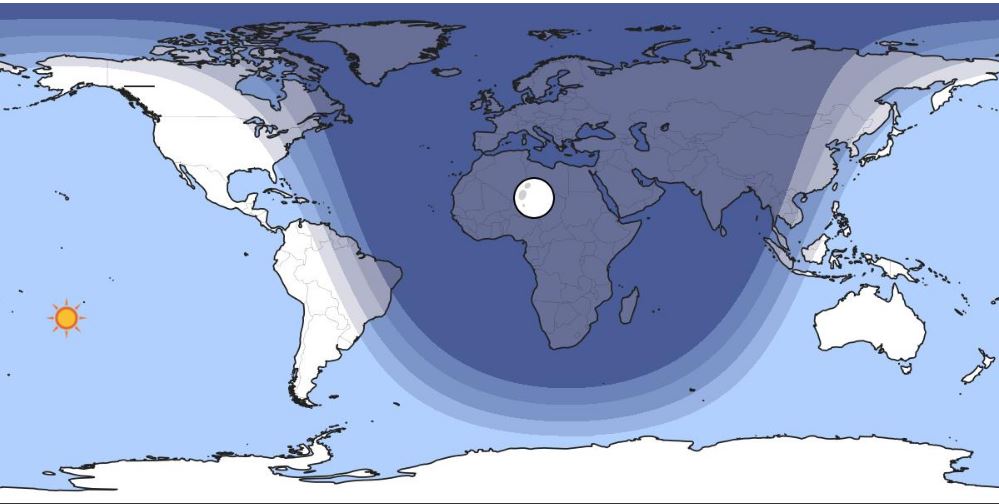Just a quick post of articles I want to load up on my Surface at O'Hare:
Off to take Parker to boarding. Thence the Land of UK.
Yesterday was a bit busy. I spent my morning getting this:
I haven't named it yet. Current thoughts are Hinata (一陽), Hana (初夏), and Asahi (旦陽). (The new car was built in Naguro, Japan; thus, a Japanese name.)
The new Prius replaces Magdalena (built in Munich), the BMW 335iX that I got in 2012. Poor Lena, she was so old and decrepit she just couldn't go on much longer. She was burning 13.9 L/100 km, which is just awful. The new car, so far, hasn't burned any gasoline at all—it's only run off batteries.
Then I photographed a wedding. Two of my friends got married in what they called a "rogue ceremony" at a public building in Chicago. It was intimate, fun, and exactly right. Now I just have to process 450 shots...by next week...
This afternoon, I'm flying to my Ancestral Homeland via Atlanta. Tomorrow, St. Paul's. So it'll be a busy week.
Update: We had about 10 minutes of sun this morning, so I got a better photo of the car: 
The December solstice happens today at 22:21 UTC, which is 16:21 here in Chicago, which it turns out is the exact time of tonight's sunset. This is also true for everywhere along the lightest gray line on this map:

Note also that Africa and Europe will have a brilliant gibbous moon at the same time.
Happy solstice!
Citylab has a list:
Georges-Eugène, Baron Haussmann, 1809-1891
It’s hard to overstate the urban legacy of Baron Haussmann, prefect of the Seine during the reign of France’s Emperor Napoleon III. Between 1853 and 1870, Haussmann used his authoritarian mandate to transform the medieval Paris into the paragon of a modern city.
He ran broad new boulevards through maze-like old neighborhoods to slow the spread of disease and improve transportation (and, some historians have said, make it easier for troops to put down the armed rebellions that erupted in the French capital). The buildings that replaced the medieval quarters—with five or six stories and mansard roofs—have since become symbols of Paris and his remaking of it. Haussmann placed grand, secular monuments strategically along the sight lines of the new boulevards, and created parks and squares. New sewer and gas lines improved sanitation and, virtually overnight, transformed Paris into the City of Light.
There are 14 others, including Jane Jacobs and her arch-nemesis Robert Moses.
Via Bruce Schneier, a report on how third-party Amazon sellers use Amazon's own policies to attack their rivals:
When you buy something on Amazon, the odds are, you aren’t buying it from Amazon at all. Plansky is one of 6 million sellers on Amazon Marketplace, the company’s third-party platform. They are largely hidden from customers, but behind any item for sale, there could be dozens of sellers, all competing for your click. This year, Marketplace sales were almost double those of Amazon retail itself, according to Marketplace Pulse, making the seller platform alone the largest e-commerce business in the world.
For sellers, Amazon is a quasi-state. They rely on its infrastructure — its warehouses, shipping network, financial systems, and portal to millions of customers — and pay taxes in the form of fees. They also live in terror of its rules, which often change and are harshly enforced. A cryptic email like the one Plansky received can send a seller’s business into bankruptcy, with few avenues for appeal.
Sellers are more worried about a case being opened on Amazon than in actual court, says Dave Bryant, an Amazon seller and blogger. Amazon’s judgment is swifter and less predictable, and now that the company controls nearly halfof the online retail market in the US, its rulings can instantly determine the success or failure of your business, he says. “Amazon is the judge, the jury, and the executioner.”
An algorithm flags sellers based on a range of metrics — customer complaints, number of returns, certain keywords used in reviews, and other, more mysterious variables — and passes them to Performance workers based in India, Costa Rica, and other locations. These workers choose between several prewritten blurbs to send to sellers. They may see what the actual problem is or the key item missing from an appeal, but they can’t be more specific than the forms allow, according to Rachel Greer, who worked as a fraud investigator at Amazon before becoming a seller consultant. “It feels like it’s a bot, but it’s actually a human who is very frustrated about the fact that they have to work like that,” she says.
The Performance workers’ incentives favor rejection. They must process approximately one claim every four minutes, and reinstating someone who later gets suspended again counts against them.... When they fall behind...they’ll often “punt” by sending requests for more information....
Scary. And an example of why monopolies are bad. As Schenier says, "Amazon is basically its own government—with its own rules that its suppliers have no choice but to follow. And, of course, increasingly there is no option but to sell your stuff on Amazon."
Note that I say this while watching an old TV show on Amazon Prime, waiting for Amazon to deliver a replacement Fitbit band, and on and on.
I'm heading to the Ancestral Homeland in a few days, and this chart is a veritable Christmas present from the Brexit idiots:

The last time Sterling was this low was Christmas 2016—the last Christmas I was in London.
Thank you, Boris Johnson, and your tourist-friendly policies.
Engineer Mark Rober came up with a beautiful response to people stealing packages from his front porch:
I sense a Kickstarter in his future...
Forty years ago, Des Plaines, Ill., police arrested John Wayne Gacy on suspicion of murder. Then they found more than 20 bodies in his crawlspace. The Tribune has a retrospective:
John Wayne Gacy’s confession to the rape and murder of more than 30 people didn’t just awaken America to a nightmare hidden in its own backyard. The discovery 40 years ago of the dank, muddy mass grave underneath Gacy's yellow brick ranch house at 8213 W. Summerdale Ave. forever shattered the image of the safe suburban community.
A police search for missing Maine West sophomore Robert Piest led investigators to 36-year-old Gacy, a “stocky, bull necked contractor,” described by neighbors and business associates as a pillar of the community: a likable, boastful divorced businessman and Democratic precinct captain who hosted themed neighborhood parties and entertained children as a clown named Pogo.
“(The public) would feel much more comfortable if Gacy was this type of creepy, sequestered ghoul that was unkempt and heinous,” Detective Sgt. Jason Moran of the Cook County sheriff’s office, who is a point man on the Gacy case, said recently. “But instead, he dressed as a clown and bounced kids on his knee. He would knock at your door and say vote for my candidate.”
Gacy’s nice-guy persona masked something far more sinister. Once they were safely restrained — usually in a pair of handcuffs as he demonstrated a “trick” he learned as a clown — Gacy’s easy smile melted away, revealing a cold, growling predator who sexually assaulted his victims before strangling many of them with a knotted rope. He buried 29 of his 33 victims in trenches underneath and around his home and dumped four others from bridges once his property could hold no more bodies.
Yes: this is the guy that made us Gen-X kids fear clowns.
Meet Piper, who clears out the birds at Cherry Capital Airport in Traverse City, Mich.:
Wisconsin, founded in a tradition of liberalism, is shifting its world-class university away from actually educating students into giving them vocational training instead:
In March 2018, the school’s administration offered a proposal to deal with the deficit. Cuts were necessary, the administration said. Liberal-arts staples such as English, philosophy, political science, and history would have to be eliminated. All told, the university planned to get rid of 13 majors. Not enough students were enrolled in them to make them worth the cost, the university argued. “We’re facing some changing enrollment behaviors,” Greg Summers, the provost and vice chancellor at Stevens Point, told me. “And students are far more cost-conscious than they used to be.”
Instead, administrators wanted to focus the school’s limited resources on the academic areas that students were flocking to and that the state’s economy could use straightaway—though they maintained that the liberal arts more generally would remain central to the curriculum, even if these specific majors were gone. “We remain committed to ensuring every student who graduates from UW-Stevens Point is thoroughly grounded in the liberal arts, as well as prepared for a successful career path,” Bernie Patterson, the institution’s chancellor, said in a message to the campus. The changes would reflect “a national move among students towards career pathways,” administrators argued. The proposal planned to add majors in chemical engineering, computer-information systems, conservation-law enforcement, finance, fire science, graphic design, management, and marketing. By focusing more on fields that led directly to careers, the school could better provide what businesses wanted—and students, in theory, would have an easier time finding jobs and career success.
Fierce backlash to the proposal from students, faculty, and alumni pushed the administration to reconsider its original plan. By the time the final proposal was released in mid-November 2018, it was less expansive, though still forceful. Six programs would be cut, including the history major. The university seemed to be eyeing degree programs with low numbers of graduates, and nationally, the number of graduates from bachelor’s programs in history has had the steepest decline of any major in recent years, according to the National Center for Education Statistics.
If the proposal, which is now in the middle of a public-comment period, is finalized, history classes will still be offered, but Willis said that cutting the major may ultimately lead to a reduction of staff and upper-level courses, such as the spring seminar on the Holocaust and its major’s emphasis on race and ethnicity. To Willis, this isn’t just an educational loss, but a societal one as well. “You never know when a historical metaphor is going to arise,” he quipped, pointing to the recent incident in Baraboo, Wisconsin, where high-school students gestured the Nazi salute in a photo.
Here's a tip: liberal education, especially in areas like English and history, is job training. Anyone can write code; many people can manage; actually figuring out how to run a business is different.
It's yet another example of the Dunning-Kruger effect: you need a liberal education to understand how beneficial—how useful—it is. And people like Scott Walker don't have those tools.